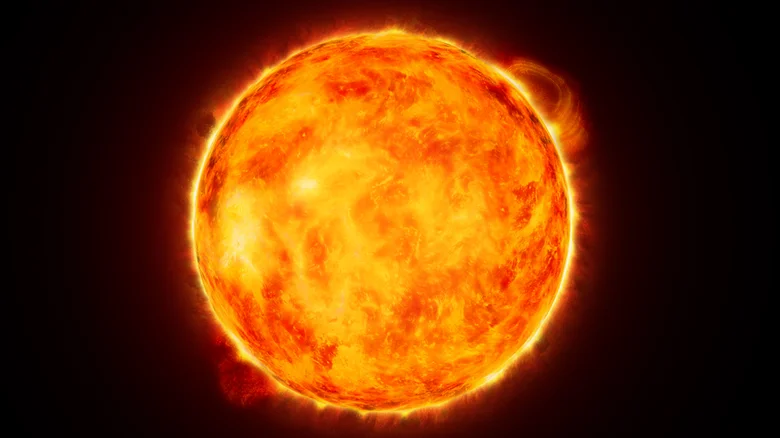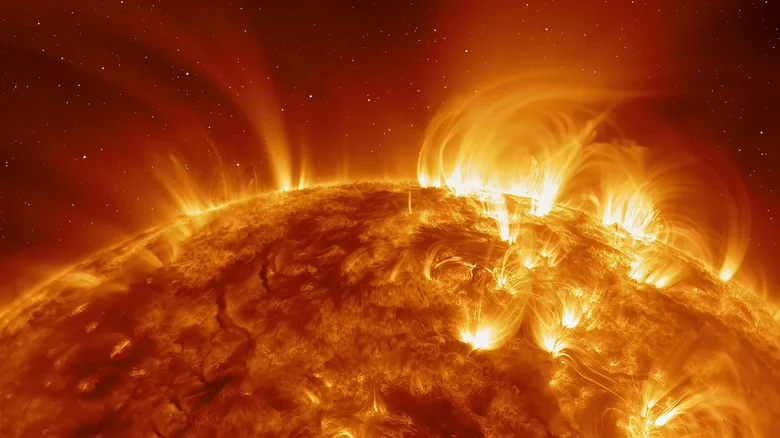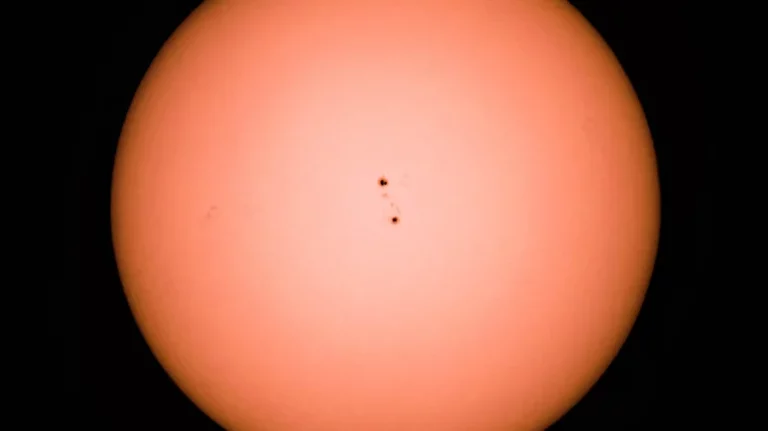The Effect That Sunspots Actually Have On Earth’s Weather
We don’t always recognize what an awesome force the sun really is. We respect it because we must, with sunburn being the scourge of many a vacation. It isn’t only sore, inconvenient, and super itchy, either: As the Mayo Clinic reports, sunburn can leave us at risk of actinic keratoses and melanoma, potentially life-threatening skin cancer.
According to Live Science, the sun has around 8 billion years of its life left. What will happen when it dies? It will become an enormous red giant which will spell curtains for us here on Earth. So, yes: any plans you may have made for the year 8 billion might have to be canceled. The message is clear: don’t mess with the sun.
This vast celestial body has the ability to end all life on Earth, and it seems that at some point in the distant future, it’ll do just that. For now, though, we can take comfort in the fact that it’s going to keep on shining and keep things ticking. It has a very direct influence on that process, in fact, with sunspots influencing the weather we experience.
THE CRUCIAL, VOLATILE POWER OF THE SUN

Of course, Earth’s weather is widely dictated by the sun. According to the California Institute of Technology’s David Stephenson (per Popular Science), the average temperature across the globe would eventually plummet to -400 degrees Fahrenheit (-240 degrees Celsius) if the sun were to magically disappear. Per The Planetary Society, this is right around the coldest known temperature in the solar system (-415 degrees Fahrenheit or -248 degrees Celsius), which was recorded in a crater of the moon.
Luckily for all of us Earth-dwellers, the sun continues to heat the planet and exert its influence on our weather. There are fascinating anomalies happening over there on its own surface, too, and sunspots are just one of them. Per Space, the magnetic field of the sun is different in different areas, and a solar cycle of 11 years marks how it changes and what it’s doing. This magnetic power is the cause of sunspots: dark patches that mark areas where the magnetic field is stronger.
The National Weather Service explains why sunspots aren’t as hot as the rest of the star’s surface: “Because of the strong magnetic field, the magnetic pressure increases while the surrounding atmospheric pressure decreases. This in turn lowers the temperature relative to its surroundings because the concentrated magnetic field inhibits the flow of hot, new gas from the Sun’s interior to the surface.”
Sunspots are harbingers of other solar activity too, and it’s this activity that causes curious weather phenomena on Earth.
A WARMING EFFECT?

The National Weather Service explains that disruptions in the magnetic field across the sun can result in what’s called a coronal mass ejection. According to NASA, these tend to be associated with heavy sunspot activity and result from closures in regions of the magnetic field. Waves of huge amounts of matter result, erupting dramatically.
The National Weather Service adds that solar flares are eruptions of plasma that are blasted from the sun. X-rays result, and they cause geomagnetic storms across the planet. The more sunspots, the outlet concludes, the busier such activity will be and the greater the disruption we experience. Per the Space Weather Prediction Center, plasma can reach the Earth in concentrations of one billion tons. The Geomagnetic Storm Scale determines the severity of such an event to predict and mitigate any damage that may be done to technology and electronics.
In terms of the weather and the climate of the planet, sunspots have a very minor effect, according to NASA. During the most sunspot-heavy point of the solar cycle, the total solar irradiance is only around one-tenth of a percentage point higher. Essentially, all of this solar activity barely warms the planet any more than it usually would. The cycle is just that, The Conversation reports: a repeating pattern of highs and lows. In terms of a steady heating of the planet, then, we appear to largely have ourselves to blame rather than sunspots or anything else the sun may be doing.
Do not forget to share your opinion with us to provide you with the best posts !





0 Comments